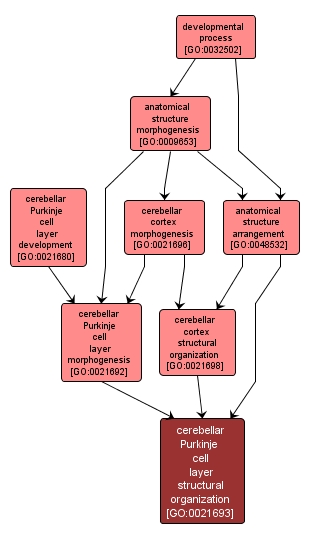| Desc: |
The process that contributes to the act of creating the structural organization of the cerebellar Purkinje cell layer. This process pertains to the physical shaping of a rudimentary structure. The Purkinje cell layer lies just underneath the molecular layer of the cerebellar cortex. It contains the neuronal cell bodies of the Purkinje cells that are arranged side by side in a single layer. Candelabrum interneurons are vertically oriented between the Purkinje cells. Purkinje neurons are inhibitory and provide the output of the cerebellar cortex through axons that project into the white matter. Extensive dendritic trees from the Purkinje cells extend upward in a single plane into the molecular layer where they synapse with parallel fibers of granule cells. |














